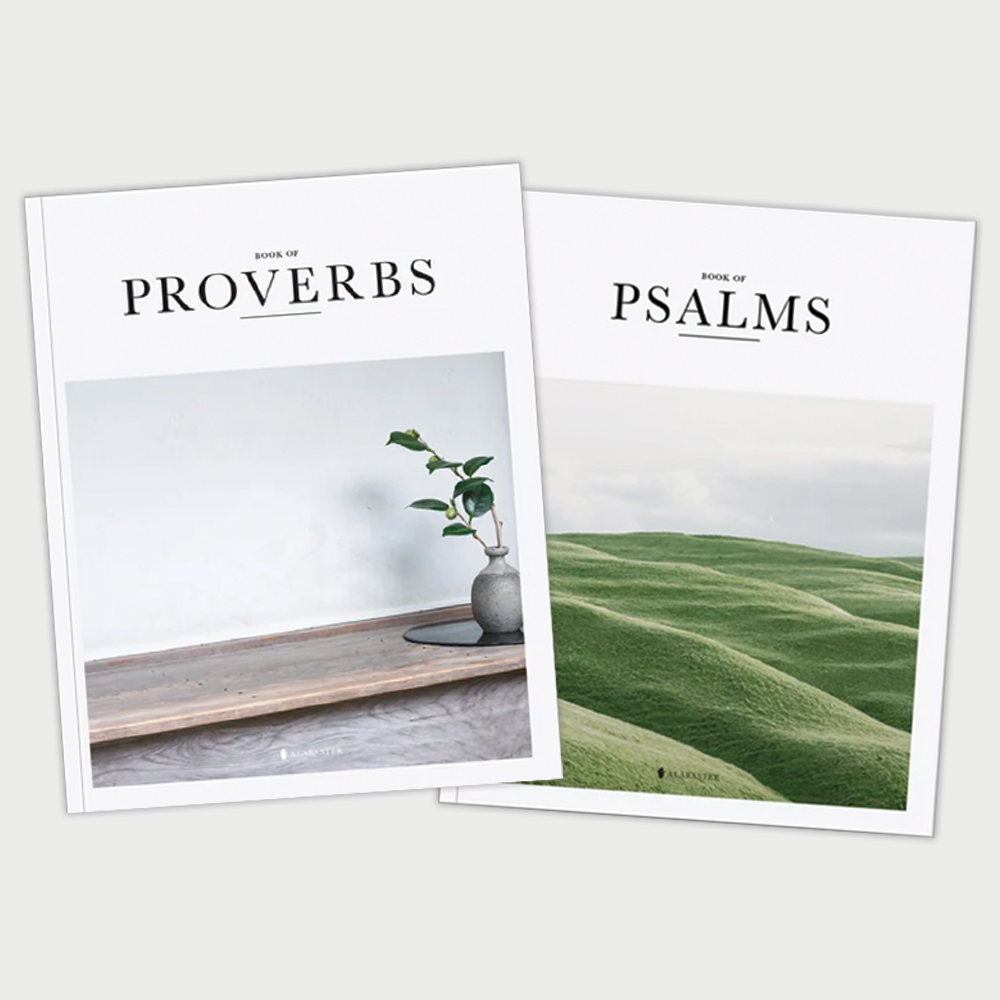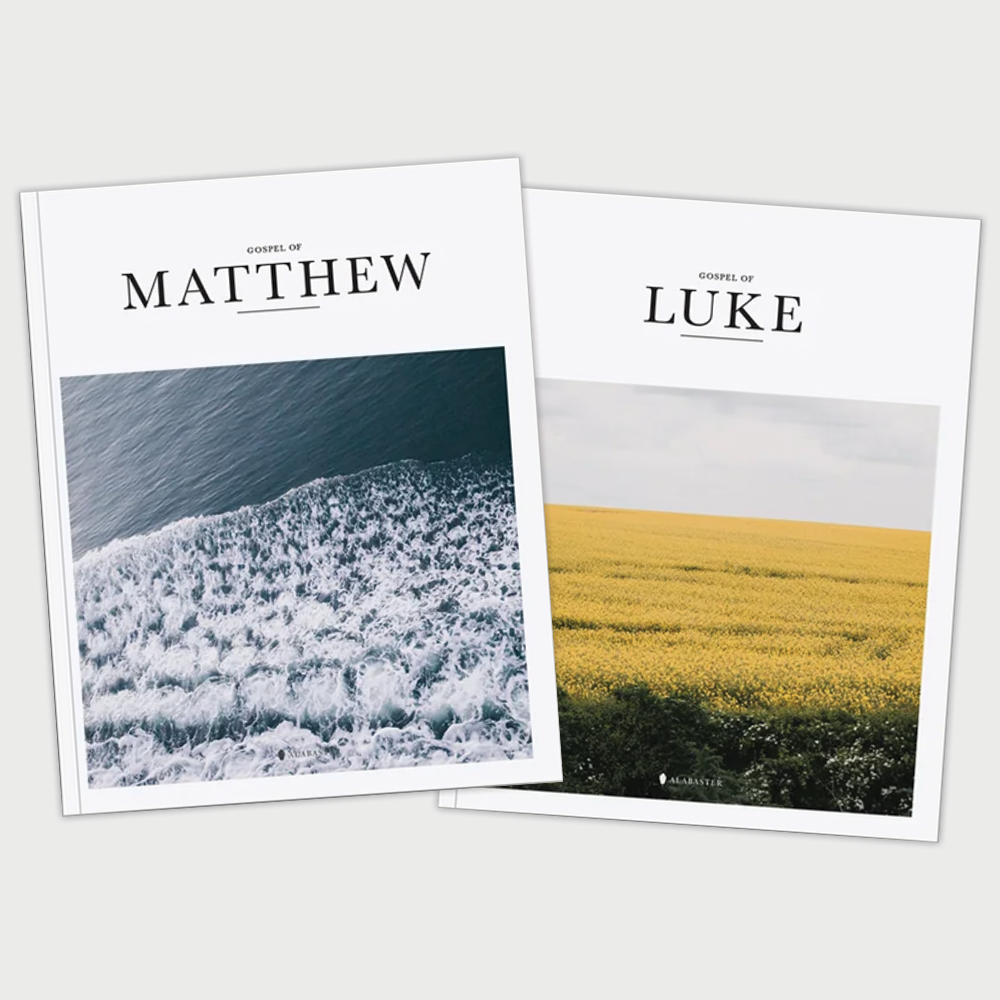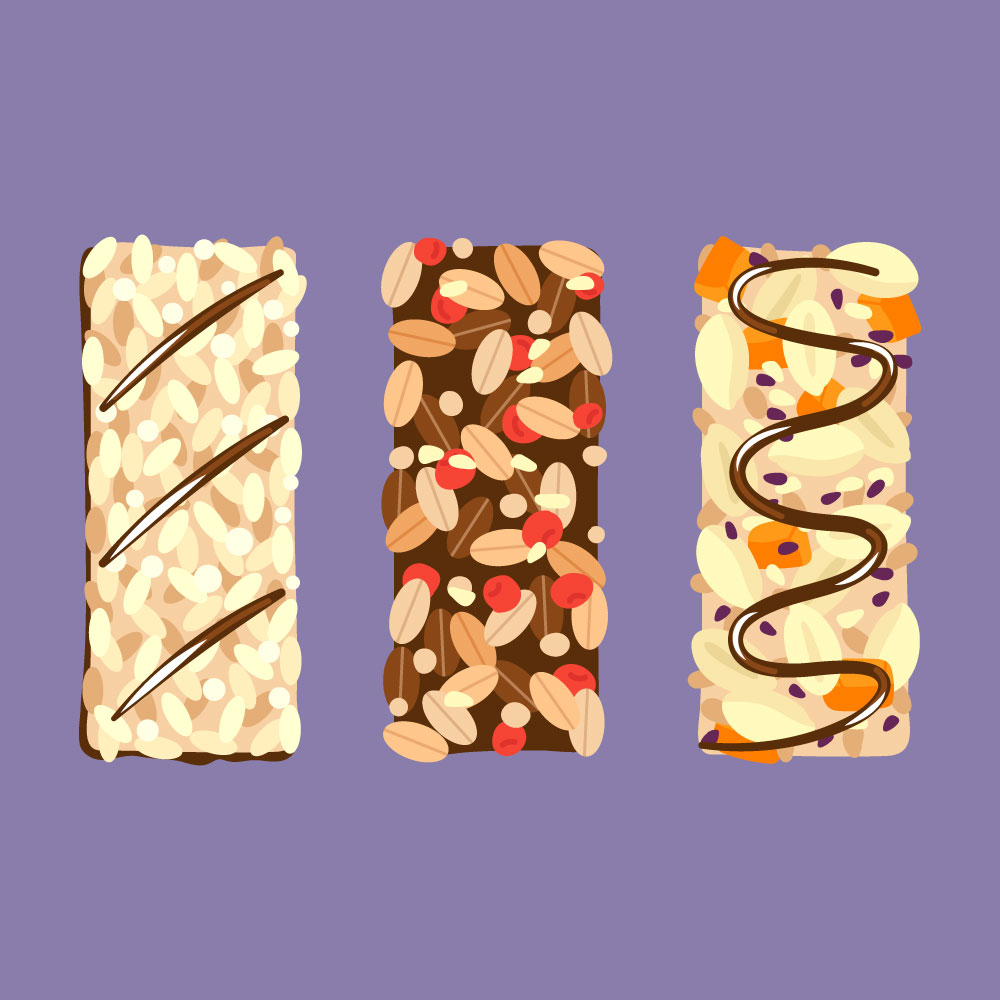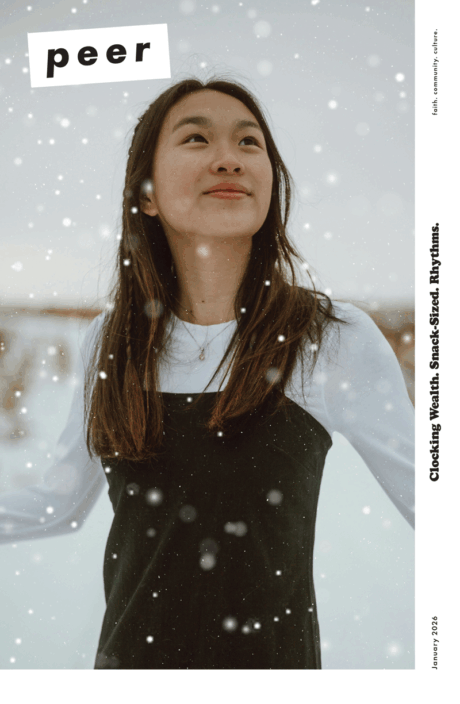
Curious Faith
"Biblical literacy is fundamental because it allows us to understand and engage with the core tenets of our faith."Seeing a spiritual need on college campuses, Brian Chung and Bryan Ye-Chung created a product that would integrate their passion for faith and art. That product would eventually lead to the company Alabaster Co., a company that integrates visual imagery and thoughtful design into different books of the Bible. Today, Alabaster is made up of a team of eight staff including Samuel Han, the Art Director for Alabaster. They work together to illustrate the Bible for all, especially millennials and Generation Z.
“The church used to be the center of art and beauty, with beautiful stained-glass windows, renaissance paints and ancient cathedrals,” says Brian Chung, co-founder of Alabaster. “All beautiful pieces of art that pointed people to God, and we wanted to do something similar in a modern-day context. We wanted to make a Bible whose visuals could deepen our experience with God.”
The Origins of Alabaster Co.
PEER: When did you start Alabaster Co.? Why did you start the business? Why illustrated Bibles? Can you explain the mission of showing the story of God as beautiful?
BRIAN: Alabaster started in 2016. In 2014, my co-founder and I read a book called “Real Life” that talks about how every generation asks a spiritual question. Each question points to Jesus.
For Boomers, their spiritual question was, “What is true?” So, you see a rise in the apologetics movement. For Gen Xers, their spiritual question was, “What is real?” They wanted to see pastors who could be real and authentic with them. For Millennials, their spiritual question was,” What is good?” Millennials are out there doing good and just things in the world. And then he predicts what the next spiritual question would be, Gen Z. He predicted their question would be, “What is beautiful?” Reading this in 2014, I already felt like this was starting to be true. People were judging companies by their website or Instagram. We are increasingly living in a visual culture; we consume visual media like Netflix, YouTube and Instagram. And for me, the question that I kept asking is, “How can I show the world that God is good and beautiful?”
PEER: When did you start Alabaster Co.? Why did you start it?
BRIAN: A little bit about me, I didn’t grow up Christian, I was raised in a Buddhist household, and I remember my first time getting my Bible as a Christian: excited but intimidated. I flipped through the first couple of pages; it wasn’t the story of Genesis first; it was descriptors, understanding the translation, things to fill out, the text was really condensed, which made it hard to read, and the paper was really, really thin. It was unlike any other book that I had experienced reading. This was my sophomore year in college, and sitting next to me was my marketing textbook which was designed like a magazine. And for the first time in college, I felt so excited to read my college textbook. And then I thought to myself, “Can the Bible be designed differently?”
I didn’t do anything about it at the time. I graduated college, did campus ministry through a ministry called Intervarsity and six years into doing campus ministry, I’m having a conversation with the other co-founder of Alabaster, his name is Bryan Ye-Chung. Yes, we share similar names. As an animator and artist, he wanted to explore the intersection of art and faith and brought the idea of starting something together; maybe it was a magazine, maybe it was a website. And then I said to him, “Why don’t we start with the Bible?”
So, we decided to launch a Kickstarter to see if people would be interested in a beautifully designed Bible, something that was more than just aesthetically beautiful but also thoughtful and intentional. As Christians, we knew the story of Jesus was beautiful, and we wanted to create a beautiful reading experience.
We pressed launch on September 7, 2016, and immediately everyone in my network started sharing it.

PEER: Why illustrated Bibles? Can you explain the mission of showing the story of God as beautiful?
BRIAN: What makes Alabaster Bibles different is that you will see beautiful imagery and thoughtful design integrated within each individual book of the Bible. We are thoughtful of negative space, typography and photography, and it’s also printed on high-quality thick paper. Our Bibles look more like art books or lifestyle magazines.
The church used to be the center of art and beauty, with beautiful stained-glass windows, renaissance paints and ancient cathedrals. All beautiful pieces of art that pointed people to God, and we wanted to do something similar in a modern-day context. We wanted to make a Bible whose visuals could deepen our experience with God.
PEER: Did you see a need on college campuses that led you to starting Alabaster?
BRIAN: I was previously working at a campus ministry called Intervarsity. During one of our annual conferences, we handed out Bibles to people who were exploring faith. I will never forget watching how someone who didn’t identify as Christian opened it. They started at the front, where the first few pages were descriptions and maps; she literally had to flip many different, very thin pages to finally get to the first page of Genesis. She then closed the book and put it away. With Alabaster, I have seen people actually read the Bible and spend a good amount of time going through the pages. There is something about beauty and design that helps us engage in deeper ways.
PEER: What kind of feedback did you see from Christian young adults?
SAMUEL: The feedback we receive from Christian young adults can vary from person to person. When we talk to them, we often see two main reactions. The first is excitement. I remember talking to a college student who was really enthusiastic about Alabaster. She told me how all her friends love our books and how they’ve helped them experience the Bible in a new and exciting way. The second reaction is curiosity. Some people haven’t heard of Alabaster before, so they ask questions about the artwork and colors we use and how they relate to the Bible. They want to understand the thought behind our creative choices and how they connect to biblical stories.
They appreciate how Alabaster brings a fresh perspective to their faith and sparks their interest in the Bible. It’s inspiring for us to hear about their experiences, and it motivates us to continue enhancing their understanding of the Scriptures and their connection to God’s message.

The Importance of Biblical Literacy
PEER: There has been a shift in the past few years of young people identifying as religious “nones.” What hope do you have for Alabaster Bibles to hopefully change that?
BRIAN: Our goal has always been to bring forth beauty into the world and to create beautiful Bibles that resonate with the visual culture of today—a Bible that people can interact with on a visual level, experiencing the beautiful story of God in a more tangible and intimate way.
Traditionally, Bibles have been placed on the bookshelf. However, we are now seeing and hearing from our customers that it is no longer tucked away in the bookshelf, but it’s placed at the center of the home, at the center of where conversation happens. Many of our customers share with us that they use our books as conversation starters about faith with their friends simply by placing them on their coffee tables. It’s been exciting to see how a simple design change can influence the function and placement of a book in a home.
By integrating visual imagery and thoughtful design into the text, we hope to make the biblical text more engaging and accessible. The text is still the same, now just with a new layout.
I believe that through Alabaster, people can find a connection to faith that feels authentic and beautiful whether they’ve grown up in church all their life or don’t identify with religion at all—that our Bibles would invite exploration, conversation, and ultimately, a more beautiful understanding of faith.
PEER: Why is biblical literacy important for Christians, especially young Christians, and how does Alabaster emphasize biblical literacy using the illustrated Bibles?
SAMUEL: Biblical literacy is fundamental for Christians because it allows us to understand and engage with the core tenets of our faith. The Bible is more than a collection of stories—it’s a rich tapestry of history, wisdom, poetry, prophecy and, ultimately, the revelation of God’s character and love for humanity. Particularly for young Christians, a solid understanding of the Bible is important.
By prioritizing visually appealing design, we aim to make the Scripture more approachable and compelling, especially for young Christians. The goal is to cultivate a love for God’s Word and a desire for regular engagement, resulting in a deeper faith and a stronger Christian foundation.
PEER: Would you say that Alabaster has had a positive effect in improving biblical literacy among young Christians?
SAMUEL: I’ll let our customers help answer this question. We get customer testimonials like this all the time:
“[Alabaster] always makes me excited to read the Bible and just be in God’s word.”
“I’ve always been someone who is drawn to beautiful things. Especially in creation and nature. Seeing the beauty of God’s creation glorified through these pages to better help you understand and read scripture makes this book of Exodus come to life! Not only has this format made me more excited to read the Bible, but it makes me see things I never have before as God’s word is brought to life on these pages. It is a fresh, and unique view of God-breathed scripture.”
“I am from Taiwan, where the Bible is always with small words, thin paper, and black cover. I am not religious…so, I am very glad to read this book. This is the first time I feel comfortable reading a Bible.”
PEER: What next steps do you have for Alabaster Co.?
SAMUEL: Alabaster has always centered around beauty and this question, “How can we show the next generation that God is beautiful?” We knew that the story of God was beautiful, so let’s make a beautiful reading experience. And yet, we don’t want to stop there. Today, we are moving beyond Bibles but also publishing devotionals, Bible Studies, and other home goods. Beauty is more than just an aesthetic; it’s a way of going through the world. To live beautifully is to live a life that contributes to human flourishing—in our work, in our relationships, and in our communities. To show God is beautiful means more than just making beautiful Bibles; it means thinking about our impact on the world. As a brand, we want to continue to use art, design, and scripture to show a bigger picture of God and create a better and beautiful world.
To learn more about Alabaster Co., visit alabasterco.com. Follow on Instagram @alabaster_co.
Brian Chung is the co-founder of Alabaster Co. Upon graduating from the University of Southern California, he spent six years doing college ministry before launching Alabaster in 2016. His transition from college ministry to entrepreneurship was driven by his desire to address a spiritual need he observed on the college campus and to create a product that would integrate his passion for faith and art. Today, he manages a team of eight staff at Alabaster, helping to share products that bring forth beauty into the world.
Samuel Han is the Art Director at Alabaster Co., where he expertly combines his artistic skill with his deep-seated faith in creating Alabaster products. An alumnus of Parsons at the New School for Design, Samuel specialized in photography, which has played a crucial role in defining the unique visual identity of Alabaster. His portfolio boasts collaborations with various clients, including Aperture Foundation, Frama Cph, Skagen Denmark and several magazines. Currently pursuing his master’s degree in biblical studies at Wheaton College, Samuel is committed to integrating his expanding theological understanding into his artistic approach at Alabaster. His relentless pursuit of excellence, beauty and innovation greatly contributes to the value and distinctiveness of Alabaster’s products.



